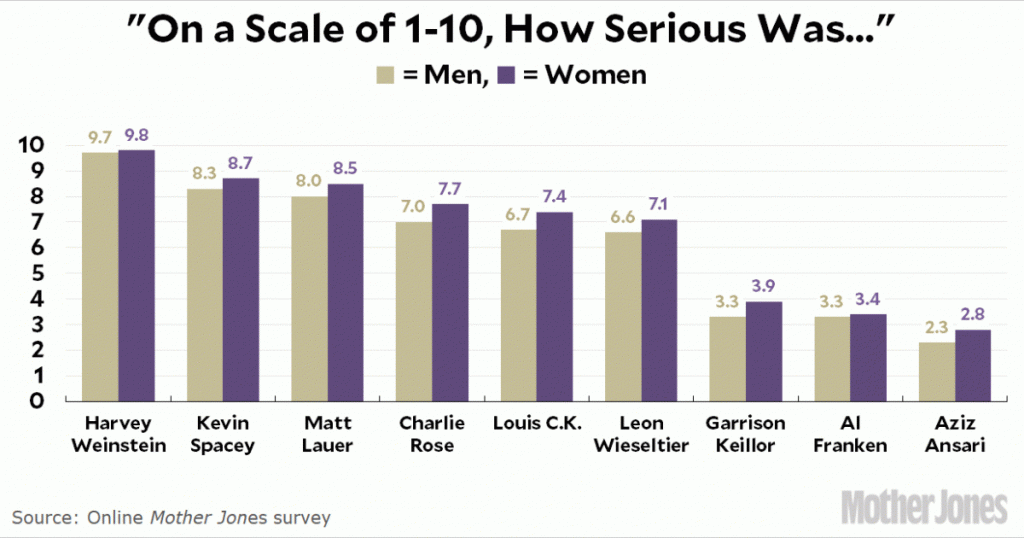Men and Women View the Seriousness of Sexual Assault About the Same
Looking for news you can trust?Subscribe to our free newsletters.
After a massive set of complex calculations, I now have the results of the sexual assault survey broken down by gender. And it’s genuinely interesting! Here’s the chart:
Of the 2,019 responses, about 80 percent were men and 20 percent were women. In general women ranked everyone a consistent half point higher than men. So there’s a difference here, but not really a large one. The two exceptions were Harvey Weinstein—who doesn’t count since he was pretty much maxed out already—and Al Franken. I’m not sure why men and women agreed only on Franken. Feel free to take guesses in comments.
But that’s not the interesting part. What’s interesting is that men and women rank-ordered these nine cases exactly the same. Although the actual scores are a little different, both men and women agree, for example, that Matt Lauer is worse than Charlie Rose and Garrison Keillor is worse than Al Franken.
I don’t want to pop off too much on this before I’ve had a chance to mull it over, but these results suggest a couple of obvious things:
The scores ranged from 2 to 10. Obviously we are all—both men and women—perfectly capable of distinguishing the seriousness of different kinds of sexual assault and harassment.
The fact that men and women agreed on the rank-ordering¹ suggests that, no, women are not trying to ban flirtation or romance or anything of the sort. The cases that didn’t bother men all that much also didn’t bother the women all that much. The moral here is not to pay too much attention to the screeching outliers on Twitter or elsewhere.² There are always screechers around. Instead, try to pay attention to the actual bulk of mainstream opinion.
One way or another, these results imply that we all have a pretty good sense of how serious various kinds of sexual assault are. I’m not sure we have the vocabulary to talk about it properly right now, but the fact that our instincts are all in the same place means that eventually a common vocabulary should be possible. It’s something to work on.
If you feel like playing around with the data yourself, a spreadsheet of all 2,019 responses is here. If you just want to see charts for each person, a screen cap of the Google summary is here.
¹I want to stress yet again that my readership is mostly a liberal, highly-educated, politically-minded audience. These results might apply more generally to other people like us, but they certainly don’t apply any more generally than that.
²Of course, that’s my advice for everything, so….




